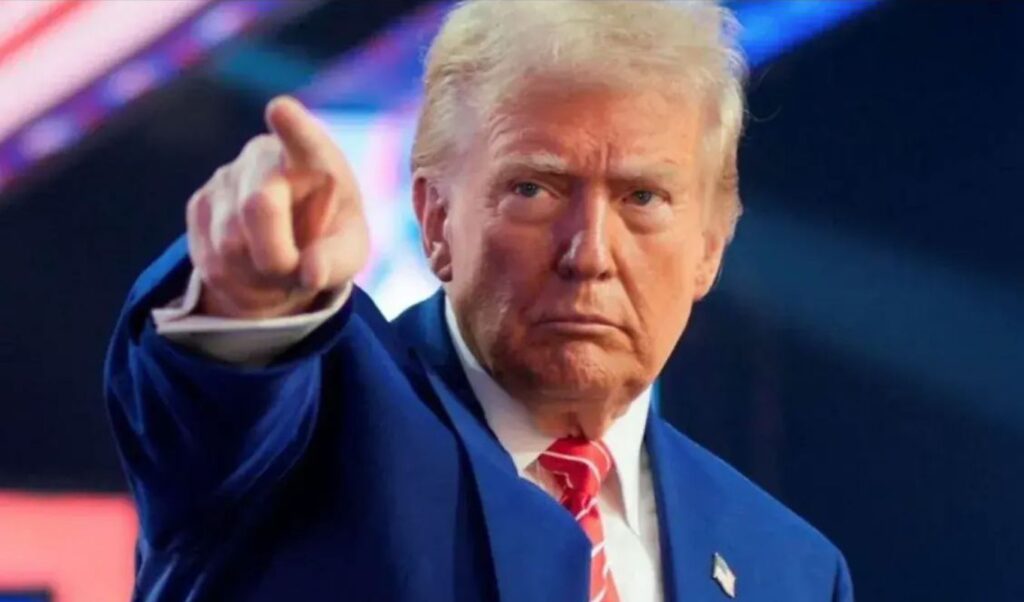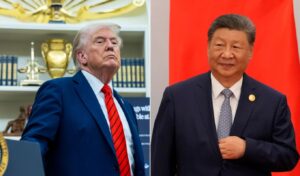With Donald Trump returning hastily to Washington after the G7 Summit focused on the Middle East situation, the American president appears to be weighing a critical decision regarding the war between Israel and Iran: whether to enter the battle by helping Israel destroy the deeply buried nuclear enrichment facility at Fordow, which can only be reached by America’s largest “bunker buster” dropped from American B-2 bombers, according to a New York Times report.
If he decides to proceed, the United States would become directly involved in a new Middle East conflict, engaging in a war that Mr. Trump has sworn, in two presidential campaigns, to avoid. Iranian officials have already warned that U.S. participation in an attack against their facilities would jeopardize any remaining possibility for the nuclear disarmament agreement that Mr. Trump insists he still wants to pursue.
Trump: unclear reason for Washington return – Iran’s message for diplomatic solution
Mr. Trump had at one point encouraged his Middle East envoy, Steve Witkoff, and possibly Vice President J.D. Vance, to offer to meet with the Iranians, according to an American official. But on Monday, Mr. Trump wrote on social media that “everyone should immediately evacuate Tehran,” which is hardly an indication of diplomatic progress.
Mr. Trump also said Monday that “I think Iran is basically at the negotiating table, wants to make a deal.”
The urgency seemed to be increasing. The White House announced late Monday that Mr. Trump was leaving the Group of 7 summit early due to the Middle East situation. “As soon as I leave here, we’re going to do something,” Mr. Trump said. “But I have to leave here.” What he intended to do remained unclear, the New York Times writes.
If Mr. Vance and Mr. Witkoff meet with the Iranians, officials say, the likely Iranian counterpart would be the country’s Foreign Minister, Abbas Araghchi, who played a key role in the 2015 nuclear agreement with the Obama administration and knows every detail of Iran’s extensive nuclear complex. Mr. Araghchi, who was Mr. Witkoff’s counterpart in recent negotiations, signaled his openness to an agreement on Monday, saying in a statement: “If President Trump is genuine about diplomacy and interested in stopping this war, the next steps matter.” “It takes one phone call from Washington to silence someone like Netanyahu,” he said, referring to the Israeli prime minister. “This could open the path for a return to diplomacy.”
New York Times: Trump’s weapon if Iran negotiations don’t progress
But if this diplomatic effort fails or if the Iranians remain unwilling to yield to Mr. Trump’s central demand that they must ultimately end all uranium enrichment on Iranian soil, the president would still have the option to order the destruction of Fordow and other nuclear facilities.
There is only one weapon for this job, experts argue. It’s called the Massive Ordnance Penetrator, or GBU-57, and weighs so much – 30,000 pounds – that it can only be lifted by a B-2 bomber. Israel has neither the weapon nor the bomber required to lift it and carry it over the target. If Mr. Trump doesn’t take this step, it could well mean that Israel’s main objective in the war will never be completed, according to the New York Times analysis.
“Fordow was always the essence of this thing,” Brett McGurk, who worked on Middle East issues for four consecutive American presidents, from George W. Bush to Joseph R. Biden Jr., told the American newspaper. “If this ends with Fordow still enriching, then it’s not a strategic gain.”
Iran: how Fordow would be hit by the U.S. if they “cross the Rubicon”
This has been true for a long time, and over the past two years the American military has refined the operation, under close White House oversight. The exercises concluded that one bomb wouldn’t solve the problem – any attack on Fordow would have to be done in waves, with B-2s releasing bomb after bomb into the same hole. And the operation would have to be executed by American pilots and crew.
All of this was in the realm of war planning until the first shots Friday morning in Tehran, when Mr. Netanyahu ordered the strikes, declaring that Israel had discovered an “imminent” threat requiring “preemptive action.” New intelligence, he suggested without describing details, showed that Iran was on the threshold of converting its fuel stockpile into weapons.
American intelligence officials who have been monitoring the Iranian program for years agree that Iranian scientists and nuclear specialists were working to shorten the time needed to build a nuclear bomb, but they didn’t see huge breakthroughs.
However, they agree with Mr. McGurk and other experts on one point: If the Fordow facility survives the conflict, Iran will retain the key equipment needed to remain on a path toward the bomb, even if it would first have to rebuild much of the nuclear infrastructure that Israel has left in ruins during four days of precision bombing.
There may be other alternatives to bombing, though they’re not nearly as certain. If power to Fordow is cut off, by sabotage or bombing, it could damage or destroy the centrifuges spinning at supersonic speeds. Rafael Grossi, director general of the International Atomic Energy Agency, said Monday that this may have happened at the country’s other major uranium enrichment center, Natanz. Israel cut power to the plant on Friday and Mr. Grossi said the outage likely sent them spinning out of control.
The profile of the “American super weapon” and Netanyahu’s pressure – message from former Israeli Defense Minister
Mr. Trump rarely speaks about Fordow by name, but has occasionally referred to the GBU-57, sometimes telling his aides that he ordered its development. This isn’t correct: The United States began designing the weapon in 2004, during the George Bush administration, specifically to collapse the mountains protecting some of the deepest nuclear facilities in Iran and North Korea. It was tested, however, during Mr. Trump’s first term and added to the arsenal.
Mr. Netanyahu has pressured the United States to provide their explosives since the Bush administration era, so far without success. But people who have spoken with Mr. Trump in recent months say the issue has repeatedly come up in his conversations with the prime minister. When Mr. Trump has been asked about it, he usually avoids answering directly.
Now the pressure is intense. Former Israeli Defense Minister Yoav Gallant, who resigned after breaking with Mr. Netanyahu, told CNN’s Bianna Golodryga on Monday that “the job needs to be done, by Israel, by the United States,” an obvious reference to the fact that the bomb would have to be dropped by an American pilot in an American plane. He said Mr. Trump has “the choice to change the Middle East and affect the world.”
And Senator Lindsey Graham, the Republican from South Carolina who often speaks for the traditional, more hawkish members of his party, said on CBS Sunday that “if diplomacy is not successful,” he would “encourage President Trump to give it everything to make sure that, when this operation is over, there’s nothing left standing in Iran as it relates to their nuclear program.”
“If that means we need to provide bombs, provide bombs,” he said, adding, in a clear reference to the Massive Ordnance Penetrator, “whatever bombs they are. If that means flying with Israel, fly with Israel.”
The Republican divide
However, Republicans are not united in this view. And the party’s split over the decision whether to use one of the Pentagon’s most powerful conventional weapons to help one of America’s closest allies has highlighted a much deeper divide. It’s not just about crippling Fordow’s centrifuges, it’s also about the MAGA view regarding the kinds of wars the United States should avoid at all costs.




